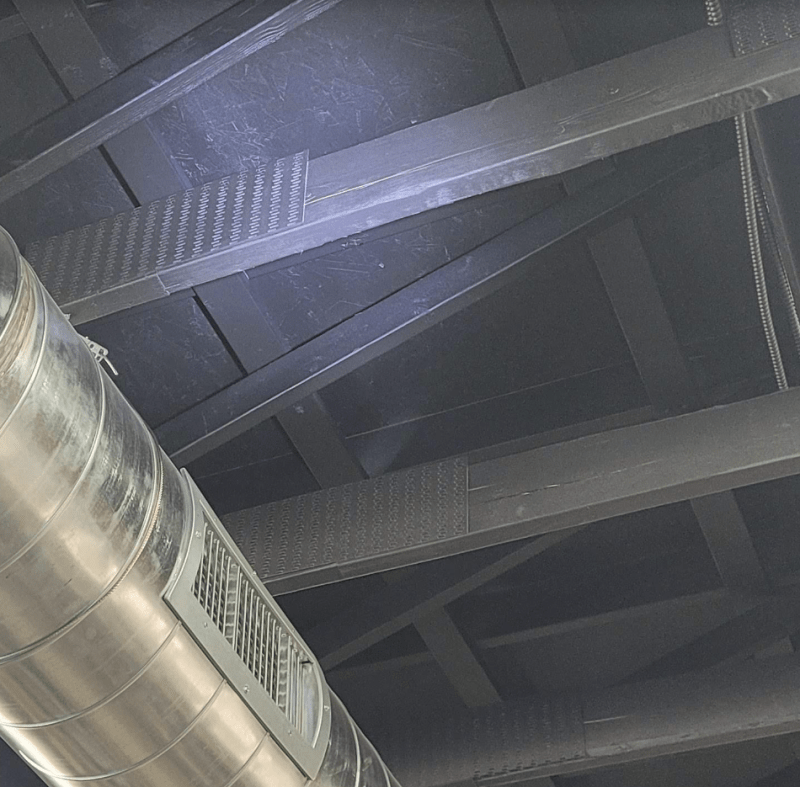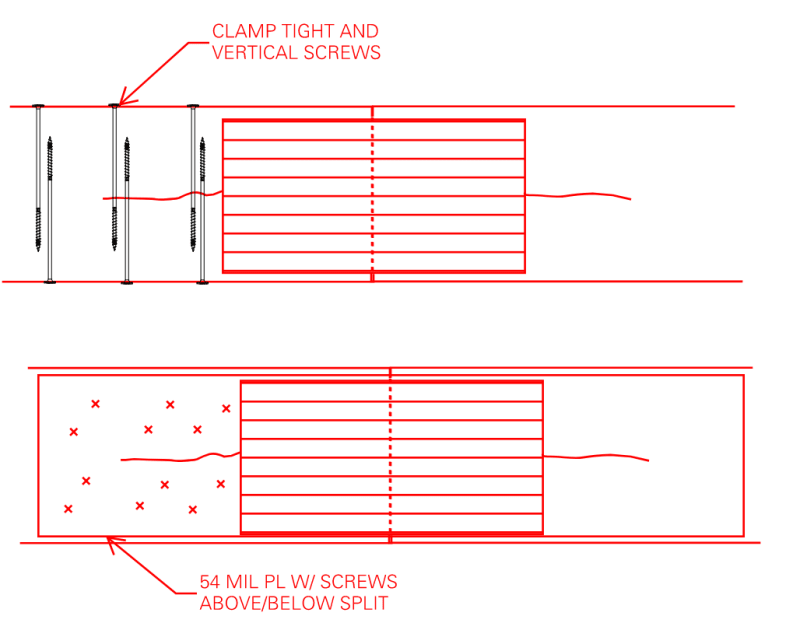jittles
Structural
- Jun 6, 2011
- 174
Hello everyone, would love second opinions on a wood truss repair.
I've got a series of wood roof trusses ~5 years old and they show signs of minor splitting at their bottom chord splice locations. See picture below, bit hard to see.
Uniform across almost all the new trusses. To me it appears to be shrinkage restraint from the splice plate, maybe the wood was not completely dry.
Initial ideas:
Sister new 2x6 ea side full length - this is the truss supplier's (dumb and strong) suggested repair with no reasoning provided. Very difficult to install with plenty of stuff in the way plus floor space below occupied, excessive IMO.
Light gage steel plates w/ screws above/below the split to tie the chords together across the split, extend a bit beyond the current split. As long as the wood has now reached equilibrium and finished its shrinkage, this shouldn't exacerbate the split by adding more restraint across the member.
Clamp and run small diameter screws vertically through the split. This one feels most robust and direct to the issue currently.
Maybe there's a slick wood epoxy that might work to fill the splits and restore the section. This is probably the dream solution here but I'm unaware of anything applicable.
And the corollary to this is what to actually design the repair for. It is a tension member, with some potential for a ceiling to be applied to the bottom chord at some point.
Restore the shear capacity completely?
Restore cross-grain tension for a potential load applied to the bottom chord?
Any thoughts or opinions would be appreciated!


I've got a series of wood roof trusses ~5 years old and they show signs of minor splitting at their bottom chord splice locations. See picture below, bit hard to see.
Uniform across almost all the new trusses. To me it appears to be shrinkage restraint from the splice plate, maybe the wood was not completely dry.
Initial ideas:
Sister new 2x6 ea side full length - this is the truss supplier's (dumb and strong) suggested repair with no reasoning provided. Very difficult to install with plenty of stuff in the way plus floor space below occupied, excessive IMO.
Light gage steel plates w/ screws above/below the split to tie the chords together across the split, extend a bit beyond the current split. As long as the wood has now reached equilibrium and finished its shrinkage, this shouldn't exacerbate the split by adding more restraint across the member.
Clamp and run small diameter screws vertically through the split. This one feels most robust and direct to the issue currently.
Maybe there's a slick wood epoxy that might work to fill the splits and restore the section. This is probably the dream solution here but I'm unaware of anything applicable.
And the corollary to this is what to actually design the repair for. It is a tension member, with some potential for a ceiling to be applied to the bottom chord at some point.
Restore the shear capacity completely?
Restore cross-grain tension for a potential load applied to the bottom chord?
Any thoughts or opinions would be appreciated!


